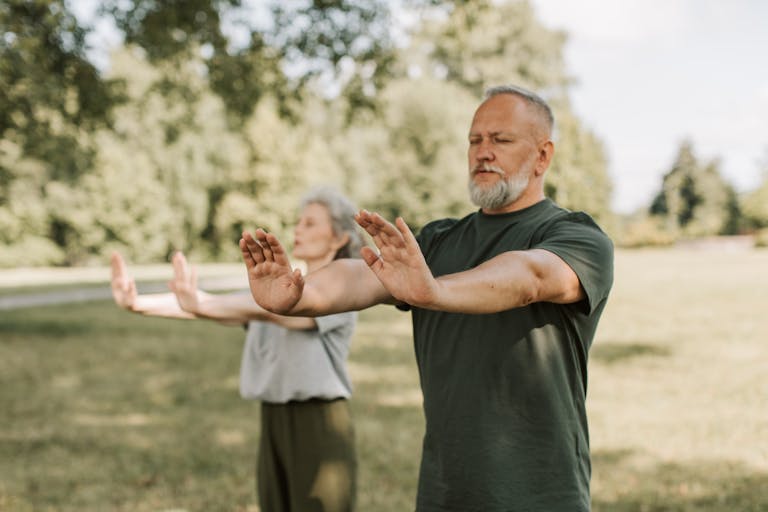FREE SHIPPING OVER $50
Bad Posture and Weak Knees? The Hamstring Secret Trainers Use to Protect Joints
Struggling with bad posture or weak knees is not just uncomfortable—it can hold you back from living an active life. While many focus on building visible muscles like the abs or quads, professional trainers know that the secret to joint protection and improved posture lies in one often-overlooked muscle group: the hamstrings. In this article, we explore how strengthening your hamstrings can be the key to reducing knee pain, correcting posture, and enhancing overall stability. We’ll dive into the science behind hamstring function, reveal the secret techniques trainers use, and provide practical exercises and tips that you can incorporate into your routine today.
Introduction to Hamstring Health

The hamstrings are a group of muscles located at the back of your thighs. They are crucial for activities such as walking, running, and bending your knees. Despite their importance, many workout routines tend to focus on more visible muscle groups, leaving hamstrings underdeveloped. When hamstrings are weak, your body compensates by overloading other muscles, which can lead to imbalances, poor posture, and even joint pain—especially in the knees and lower back.
A strong and flexible hamstring group contributes to smoother movements, reduces the risk of injuries, and supports overall alignment. This section lays the foundation for understanding why trainers emphasize hamstring conditioning as a secret to protecting joints and achieving better posture.
The Role of Hamstrings in Joint Function
Your hamstrings play several key roles that extend beyond simple leg movement. Their importance can be summarized as follows:
- Stabilization:
The hamstrings work to stabilize the knee joint during activities, absorbing shock and preventing excessive strain on ligaments. This support helps reduce the risk of knee injuries and improves overall joint function. - Postural Support:
Strong hamstrings contribute to maintaining proper alignment of the pelvis and lower back. This alignment is critical for good posture and prevents the common slouching that can lead to chronic back pain. - Movement Efficiency:
When the hamstrings are engaged correctly, they facilitate coordinated and smooth movement. Efficient hamstring function ensures that force is evenly distributed across your lower body, which is essential for both athletic performance and daily activities.
The Hamstring Secret Trainers Use
Professional trainers have long known that the hamstrings are the unsung heroes of joint protection. They employ specific techniques to ensure that these muscles are both strong and flexible. Here are some of the secret methods they use:
1. Dynamic Stretching:
Trainers begin with dynamic stretches to gently increase blood flow and prepare the hamstrings for more intense work. This method not only boosts muscle elasticity but also primes the joints for a safe, effective workout.
2. Eccentric Exercises:
Eccentric exercises focus on lengthening the muscle while it’s under tension. This controlled movement not only enhances strength but also improves muscle control, crucial for stabilizing the knees and supporting proper posture.
3. Isometric Holds:
Holding a muscle contraction without movement increases endurance and reinforces proper muscle activation. Isometric holds help ensure that your hamstrings remain engaged during daily activities, offering continuous support to your joints.
4. Resistance Band Workouts:
Resistance bands provide adjustable resistance for a focused workout. They allow for low-impact exercises that target the hamstrings specifically, reducing the risk of injury while building strength and stability.
5. Plyometric Alternatives:
Instead of high-impact jumps, trainers use low-impact power exercises that mimic explosive strength without causing joint stress. These movements help improve muscle power and coordination while protecting your knees and back.
Benefits of Strong Hamstrings
Focusing on your hamstrings offers a wide range of benefits that can improve your overall quality of life. Here’s what you can expect when you prioritize hamstring training:
- Enhanced Joint Protection:
Strong hamstrings provide critical support to the knees and lower back, reducing the risk of injury and alleviating pain during physical activities. - Improved Posture:
With balanced muscle strength, your body maintains better alignment, reducing the strain on your back and promoting a more upright, confident posture. - Increased Athletic Performance:
Whether you’re an athlete or simply enjoy staying active, strong hamstrings contribute to more efficient movement, faster recovery, and improved performance in various sports and exercises. - Reduced Pain and Discomfort:
Strengthening the hamstrings can lead to noticeable reductions in knee pain and overall discomfort, allowing you to stay active without limitations. - Better Balance and Stability:
Improved hamstring function enhances overall balance, making everyday activities easier and reducing the risk of falls or strains.
Practical Exercises to Strengthen Your Hamstrings
Integrating targeted exercises into your routine is essential for unlocking the full potential of your hamstrings. Here are some effective exercises that trainers recommend:
1. Romanian Deadlift (RDL):
The RDL is a staple for hamstring development. With a straight back and a slight bend in the knees, slowly lower the weight while keeping tension in the hamstrings. This exercise builds strength and flexibility, reducing the risk of injury.
2. Glute Bridge:
The glute bridge not only targets the glutes but also effectively engages the hamstrings. By lifting your hips off the ground and squeezing your glutes at the top, you activate your posterior chain, enhancing joint stability and improving posture.
3. Hamstring Curl with Stability Ball:
Using a stability ball challenges your hamstrings and core simultaneously. As you roll the ball toward your body by bending your knees, focus on controlling the movement to maximize muscle engagement and coordination.
4. Single-Leg Deadlift:
This exercise works one leg at a time, targeting the hamstrings and improving balance. Keeping your back straight, hinge at the hips while reaching toward the ground, and return to standing. It’s excellent for correcting muscle imbalances and boosting overall stability.
5. Resistance Band Leg Curl:
Resistance bands allow you to perform leg curls with adjustable resistance. Secure the band, lie on your stomach, and curl your legs toward your buttocks. This isolated movement strengthens the hamstrings while being gentle on the joints.
Tips for Maintaining Good Posture and Joint Health
While strengthening your hamstrings is crucial, overall joint health and posture require a holistic approach. Consider these additional tips to ensure you protect your joints and maintain optimal alignment:
- Regular Stretching:
Incorporate daily stretches into your routine to keep your muscles flexible and prevent tightness. Stretching helps maintain a full range of motion and reduces the risk of injury. - Core Strengthening:
A strong core is essential for proper posture. Include exercises like planks, abdominal crunches, and lower back workouts to support your spine and enhance overall balance. - Mindful Movement:
Pay attention to your posture during everyday activities. Whether you’re sitting at a desk or lifting groceries, make a conscious effort to keep your back straight and your shoulders relaxed. - Balanced Workouts:
Combine strength training, cardiovascular exercises, and flexibility routines to ensure that no muscle group is neglected. A well-rounded fitness regimen supports overall joint health and prevents imbalances. - Professional Guidance:
If you experience persistent pain or discomfort, consult a physical therapist or a certified trainer. Professional guidance can help tailor a workout plan to your specific needs, ensuring safe and effective exercise.
These additional strategies complement your hamstring-focused workouts, creating a robust plan for long-term joint protection and better posture.
Conclusion
Bad posture and weak knees are more than just minor annoyances—they can be symptoms of underlying muscle imbalances that affect your daily life. The hamstring secret that trainers swear by offers a powerful solution to these issues. By focusing on strengthening your hamstrings, you can enhance knee stability, improve your posture, and protect your joints from wear and tear.
Related Articles
- A Physical Therapist’s Top Resistance Band Exercises to Stop Joint Pain in Its Tracks
- Loosen Tight Hips Fast: A Personal Trainer’s Flexibility Secret Revealed
- This Posture Hack Fixes Shoulder Tension in Just 60 Seconds, According to a Physical Therapist
- Soothe Your Aching Back: 5 Yoga Poses You Need to Try Today
- Discover 10 Secret Joint-Friendly Exercises for a Pain-Free Life Over 50



